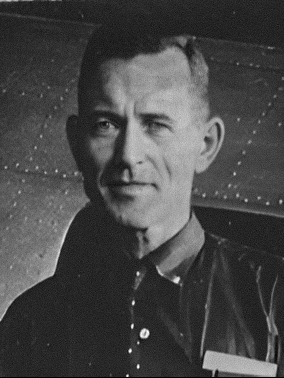Amelia Earhart, a pioneering female aviator of the 1930s, fascinated the world with her daring flights and record-breaking achievements. She was the first woman pilot to fly solo across the Atlantic Ocean, earning her the prestigious U.S. Distinguished Flying Cross. Amelia’s passion for aviation inspired countless women, and she played a crucial role in the formation of an organization for female pilots.

However, her fame came to a tragic halt on July 2, 1937, when she and her flight navigator, Fred Noonan, disappeared while attempting an around-the-world flight. In this article, we dig into the details surrounding Amelia Earhart’s disappearance, exploring various theories, examining evidence, and shedding light on the ongoing search for answers.
The flight and final moments of Amelia Earhart

Amelia Earhart and Fred Noonan embarked on their ambitious journey on May 20, 1937, from Oakland, California. Their plan was to circumnavigate the world by airplane, setting a new milestone for aviation history. They followed an eastward route, traveling across the United States and continuing along the equator. On July 1, 1937, they departed from Lae, New Guinea, heading towards Howland Island, their next destination. However, this would be the last time they were seen alive.

Troubles with communication arose during their flight, as Earhart and Noonan struggled to establish successful radio transmissions. Despite hearing some of Earhart’s garbled messages, it became increasingly challenging to decipher their content. The last transmission received from Earhart indicated that they were flying along a line of position that Noonan had calculated, passing through Howland Island. By the time the search for them began, it had already been one hour since their final transmission.
The United States Coast Guard and Navy initiated a massive search effort, scouring the waters surrounding Howland Island and neighboring Gardner Island. Unfortunately, despite the significant resources and time dedicated to the search, no trace of Amelia or Fred was ever found. On January 5, 1939, Amelia Earhart was declared legally dead.
Theories on the Disappearance of Amelia Earhart
Over the years, numerous theories have emerged to explain the mysterious disappearance of Amelia Earhart and Fred Noonan. Let’s explore some of the most prominent theories in detail.
Theory I: Japanese capture and execution
One theory suggests that Earhart and Noonan veered off course and landed on Saipan, an island in the Pacific. According to some accounts, they were captured and executed by the Japanese Navy. Several witnesses claim to have seen Amelia’s plane in the custody of military officials on Saipan during World War II. One soldier, Thomas Devine, even overheard soldiers confirming that the plane belonged to Amelia. He witnessed the plane flying overhead and noted down its identification numbers, which matched those of Amelia’s aircraft.
Devine later reported that the Army destroyed her plane by setting it on fire. Another soldier, Bob Wallack, claimed to have found a bag with documents belonging to Amelia, including her passport. However, these alleged events remain unverified, and the distance between Saipan and Earhart’s flight path raises doubts about this theory.
Theory II: Crash and sink
Another widely accepted theory suggests that Earhart’s plane ran out of fuel near Howland Island, leading to a crash and sinking in the Pacific Ocean. Researchers believe that an incorrect map, compass problems, and wind shifts caused the plane to ditch approximately thirty-five miles west of Howland Island.
Proponents of this theory argue that the vastness of the Pacific Ocean and the great depths make it extremely challenging to find the aircraft wreckage. Despite extensive searches using advanced underwater technology, no conclusive evidence has been found to support this theory.
Theory III: Gardner Island landing
A more plausible theory proposes that Earhart and Noonan landed on Gardner Island, known today as Nikumaroro. It is believed that they were able to land the plane on the reef near a wrecked freighter, and sent sporadic radio messages from the island. Rising tides and surf may have swept the plane over the reef edge, leaving Earhart and Noonan stranded on Nikumaroro.
The United States Navy flew over Gardner Island one week after the disappearance and reported signs of recent habitation. In 1940, a British colonial officer discovered a female skeleton and a sextant box at a makeshift campsite on the island’s southeast corner. The skeleton’s measurements and the presence of personal items suggested a possible connection to Amelia Earhart.
However, the remains and the sextant box have since gone missing, making it impossible to determine the identity conclusively. Ongoing research and analysis of bone fragments, artifacts, and DNA are being conducted to shed further light on the Gardner Island theory.
Continuing the search
The quest to unravel the mystery of Amelia Earhart’s disappearance continues to this day. The International Group for Historic Aircraft Recovery (TIGHAR) has been at the forefront of efforts to find concrete evidence. In their search for answers, TIGHAR has conducted underwater imaging, leading to the discovery of potential aircraft parts in the debris field near Nikumaroro. A small piece of aluminum found on the island has been identified as a patch from the fuselage of Earhart’s Lockheed Electra. This finding has prompted renewed interest and further exploration of the waters surrounding Nikumaroro.
The search for Amelia Earhart’s final resting place is not only a pursuit of historical significance but also a tribute to her pioneering spirit and the accomplishments she achieved during her lifetime. The disappearance of this aviation icon has enthralled the world for decades, and the ongoing search endeavors to provide closure to a story that has intrigued generations.
Conclusion (in summary)
Amelia Earhart’s disappearance remains one of the greatest unsolved mysteries in aviation history. The theories surrounding her fate vary, from capture and execution by the Japanese Navy to a crash and sinking in the Pacific Ocean or a landing on Gardner Island. While the crash and sink theory is more widely accepted, the Gardner Island theory offers a more compelling explanation supported by evidence such as the discovery of a female skeleton and potential aircraft debris. Ongoing research and technological advancements continue to shed light on this enigma, and the search for Amelia Earhart’s final resting place persists. The world eagerly awaits the day when the truth behind her disappearance is finally revealed, honoring her legacy as a trailblazer in aviation.




